Digital Product Design ︎ September-December 2021
A Personal Space to Build Dream Islands
Another Realm -
A Personal Space to Build Dream Islands
Summary
Procrastination is a very common emotion regulation problem that bothers a lot of people. The project aims to help people to find beautiful moments in their lives, and to self-actualize through an interesting process.
Project Type
Mobile Digital Product Design
Mobile Digital Product Design
Methodologies
Digital Product Development,
Emotional Design,
Wireframe & Prototyping
Digital Product Development,
Emotional Design,
Wireframe & Prototyping
Methodologies
Figma,
Illustrator
Figma,
Illustrator

WHAT IS ANOTHER REALM?
- A personal space to build dream islands;
- A productivity app to increase motivation;
- A community to meet friends with same goals.
SECONDARY RESEARCH
Huge market of dealing with procrastination problem.
Procrastination is a human condition. About 95% of people admit to putting off work, according to Piers Steel, author of The Procrastination Equation.
As for the phenomenon of putting stuff off, it’s “a purely visceral, emotional reaction to something we don’t want to do,” says Tim Pychyl, author of Solving the Procrastination Puzzle. The more averse you find a task, the more likely you are to procrastinate.
Metaverse, a new hot topic in tech world.
The metaverse refers to the idea of a shared, persistent virtual space, akin to a digital mirror of the real world — but without any of the constraints. Facebook CEO Mark Zuckerberg, who recently articulated his vision to transform Facebook into a metaverse company, describes it as “an embodied internet, where instead of just viewing content — you are in it.”
Currently, 90+ companies are building the metaverse. These include multiple categories:
- Software engines
- Hardware interfaces
- Products
USER RESEARCH
QUESTIONNAIRE ︎ Sample size: 54 responses (33 out of 54 people are active health-related mobile apps users)
Because of the pandemic, wellness industry is expanding rapidly. There are a lot of different directions of digital health care developing in 2020, so based on the secondary research, I developed a questionnaire to find out user insights in the digital health area.
In the questionnaire, I asked about participants’ usage of digital products that are related to health. Among the 54 responses I collected, 61.1% people have used health related digital products, and the top three most popular app categories are work-out (81.8%), mental relaxting (66.7%), and nutrition (42.4%). Besides, there are also 33.3% people use the apps less than 1 time a week.
I found it interesting that many people stop using the digital health apps very fast, so I decided to conduct a qualitative research about the possible factors that may effect their usage.
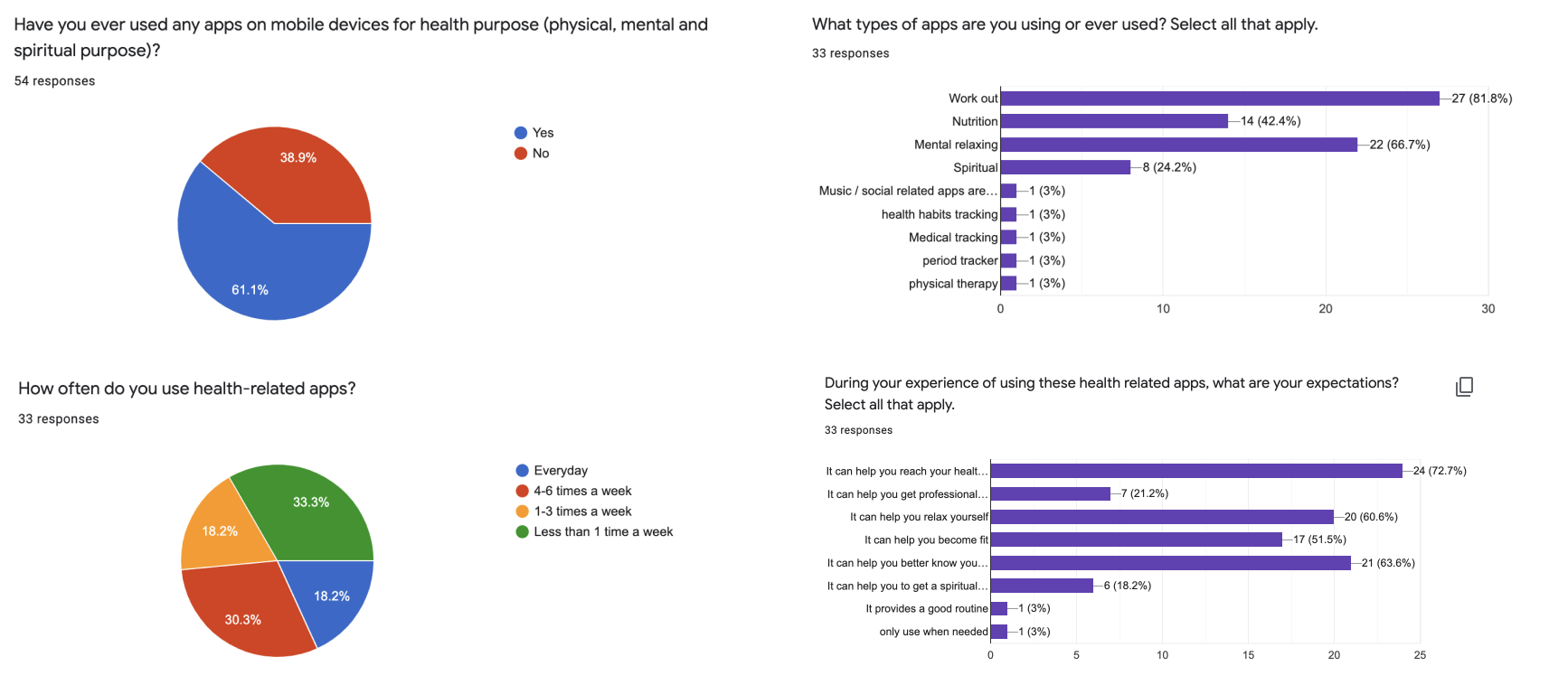
IN-DEPTH INTERVIEWS ︎ Sample size: 5 young adults who have used health-related digital products.
OBJECTIVE
To understand user behavior of using health-related digital products and find insights behind choosing these digital products.
RESEARCH METHOD
In-depth based interviews with 5 people.
To understand user behavior of using health-related digital products and find insights behind choosing these digital products.
RESEARCH METHOD
In-depth based interviews with 5 people.
TARGET USERS
- Young people who are enthuasiastic about using digital products.
- People who have experience of using health-related digital products.
INTERVIEW QUESTION SCOPE
- What health-related apps are they currently using and what features attract them.
- What health-related apps have they used before and quit after a while, and why.
- Comparing to using digital products and in-person training, what do they prefer and why.
- What are the factors that may effect their motivation of keep on doing something.
PRIMARY FINDINGS
- People have different user behavior on choosing health-related digital apps.
- Some of them prefer going to gym and taking in-person training classes, and others enjoy working out at home.

- Lack of motivation is the major problem that stops people from using digital products.
- Most users prefer digital products that don’t need them to manually inserting things.
- Community can help people have more motivation keep on doing one thing.
PERSONAS
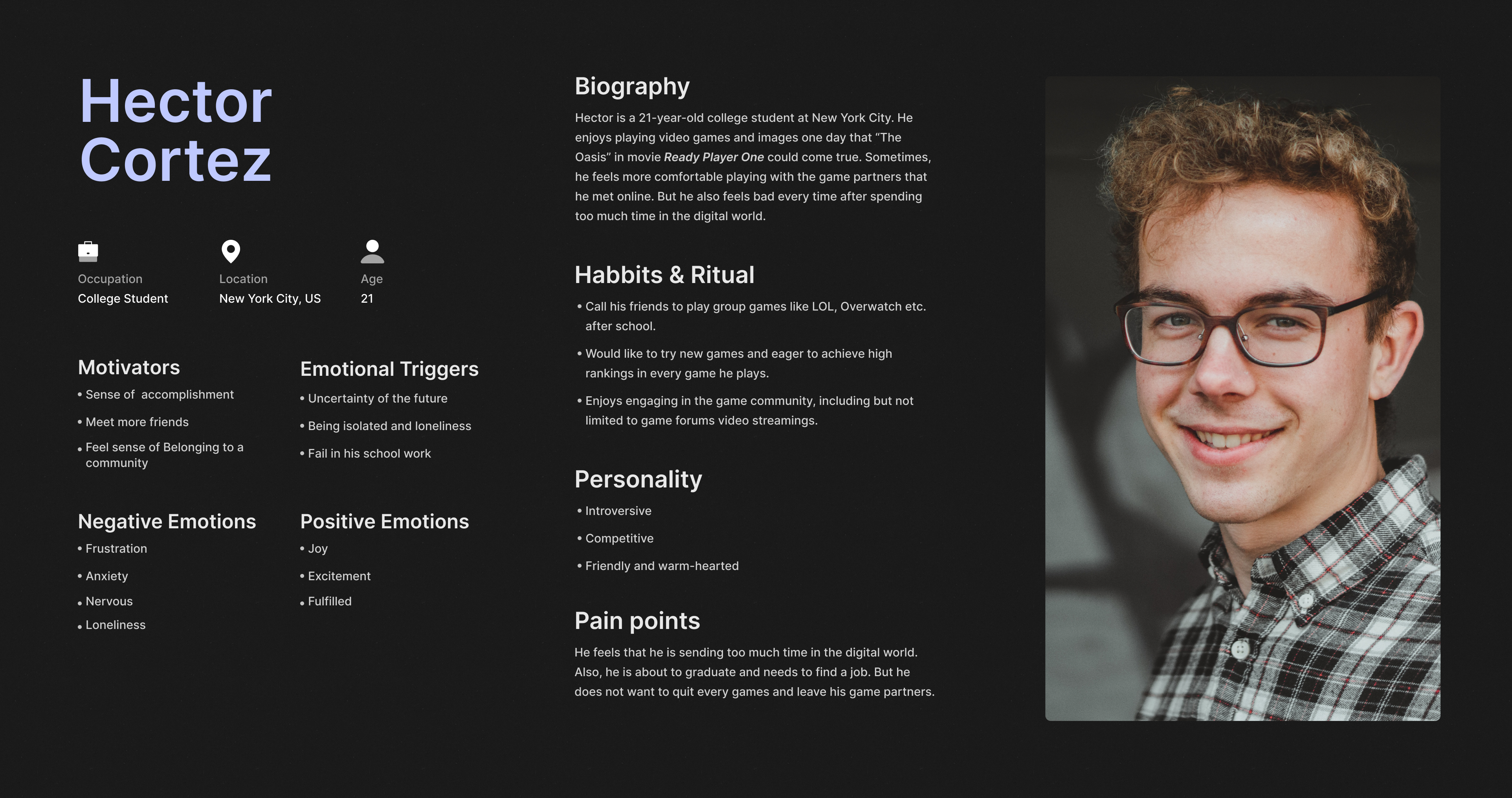
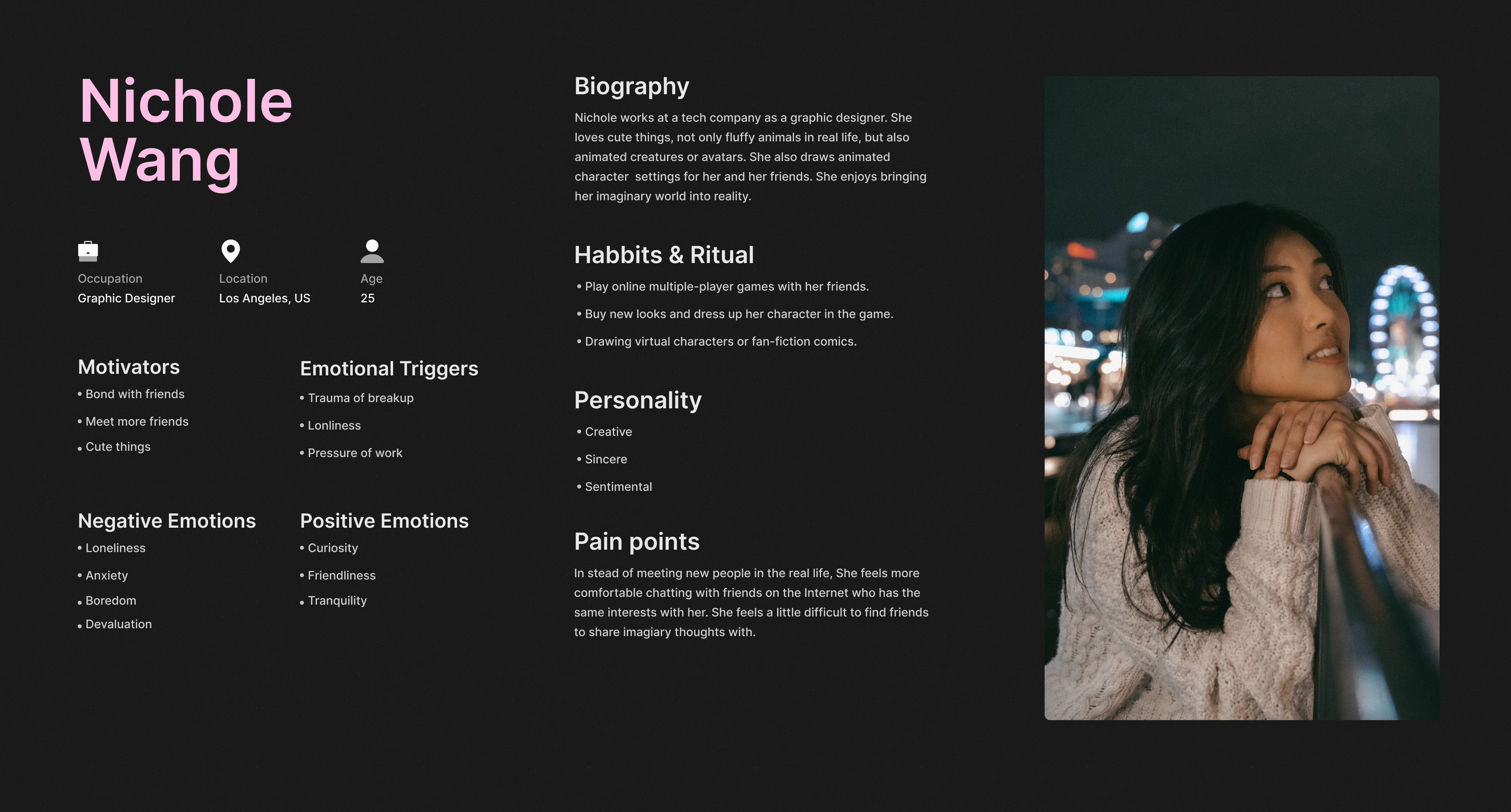
COMPETITIVE ANALYSIS
Objective: To learn about the current mobile digital products on the market, and to find a niche for ANOTHER REALM.

USER FLOWS
USER FLOW SKETCHES
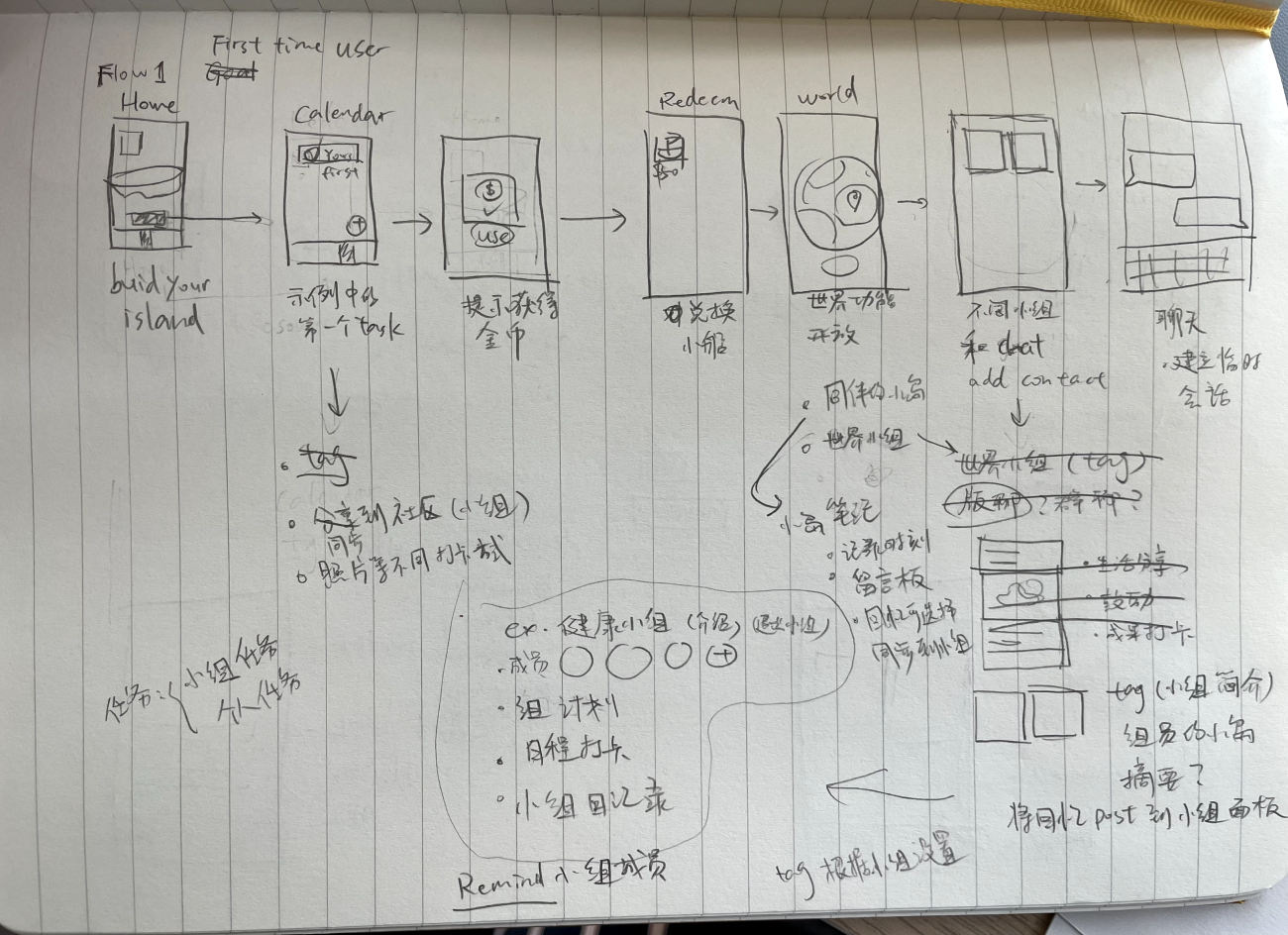

USER FLOWS


STYLE GUIDE
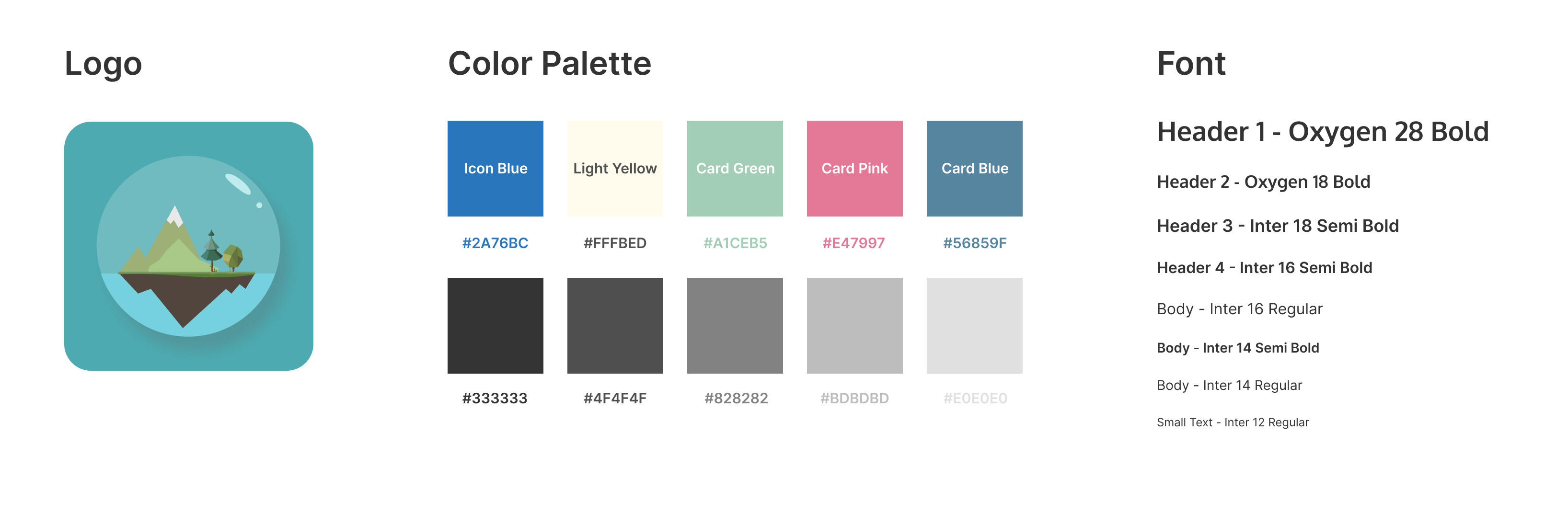
HOW DOES IT WORK?
In Another Realm, users can set up their personal goals and get rewarded during the process of finishing the goals. They can then redeem items to decorate their personal islands using the resources collected from completing goals.
It is also very easy to set-up the goals; for long-term goals, users can make the goals recurring daily, weekly or monthly, so that they do not have to set up it again.
There are also 3 different ways to complete the goal: tap the check-box, arrive at certain location, and take photos. This design is aimed to reduce the effort for users to manually input everything.
Besides, Another Realm also has a community that users can find their interet group. The groups will generate group tasks, that every group member can see each other’s progress. That will become additional motivations for users to achieve their personal goals and a better self.
FINAL PROTOTYPES
Click the image to experience this interactive prototype!LINK TO THE REAL LIFE
In Another Realm, users can not only redeem digital items, but also physical ones. Users are able to bring their digital island into the real world.
